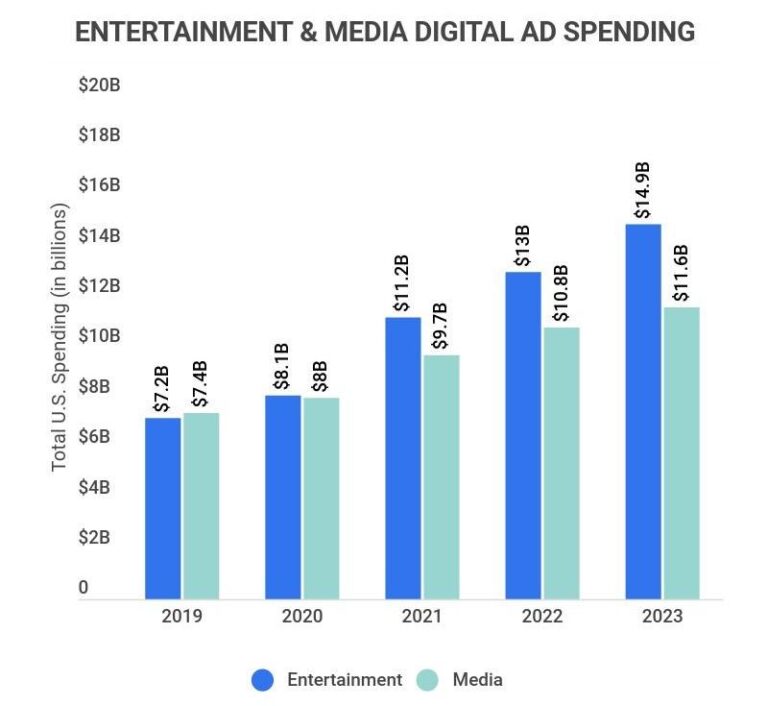The latest edition of PwC‚Äôs Global Entertainment & Media Outlook for 2025-2029 offers a comprehensive analysis of the evolving landscape of the U.S. entertainment and media sectors. As the industry faces rapid technological advancements and shifting consumer behaviors, this report provides critical insights into market trends, revenue forecasts, and emerging opportunities shaping the future. Stakeholders across the media spectrum‚ÄĒfrom streaming platforms to traditional broadcasters‚ÄĒwill find valuable data and strategic guidance to navigate a dynamic environment marked by innovation and disruption.
US Entertainment Market Trends Shaping the Future of Media Consumption
As the US entertainment landscape rapidly evolves, consumer behaviors are increasingly centered around accessibility and personalization. Streaming platforms continue to dominate, not only expanding their content libraries but also integrating advanced AI-driven recommendations to maximize viewer engagement. Traditional TV and cinema face intensified competition, pushing studios and networks to explore hybrid release models and immersive experiences such as augmented reality (AR) and virtual reality (VR) to capture fragmented attention spans.
Monetization strategies have also shifted, with the rise of microtransactions, ad-supported streaming tiers, and exclusive live event broadcasts redefining revenue streams. Key market drivers include:
- Subscription fatigue prompting tier diversification
- Content fragmentation fueling bundling and aggregators
- Technological innovation enhancing interactive storytelling
| Trend | Impact on Media Companies | Projected Growth (2025-2029) |
|---|---|---|
| Streaming Personalization | Increased user retention and engagement | +15% revenue CAGR |
| Hybrid Release Models | Expanded audience reach, diversified income | +10% audience growth |
| Interactive Experiences | New content formats driving premium pricing | +20% adoption rate |
Detailed Analysis of Streaming Services and Revenue Growth Projections
As the streaming landscape evolves rapidly, key players are capitalizing on burgeoning consumer demand that continues to reshape entertainment consumption. Subscription Video on Demand (SVOD) services lead the charge, with projections indicating an average annual revenue growth rate exceeding 12% through 2029. This surge is underpinned by expanding subscriber bases and innovations such as ad-supported tiers, which are unlocking new monetization avenues. Notably, the proliferation of localized content and strategic partnerships is fueling engagement in diverse markets, including untapped segments within the United States.
Emerging trends forecast a more competitive environment where differentiation hinges on exclusivity and advanced technology integration. Key factors driving this growth include:
- Enhanced personalization algorithms improving viewer retention
- Live streaming capabilities broadening user experiences beyond traditional video libraries
- Hybrid monetization models balancing subscriptions with targeted advertising
| Streaming Service Type | Projected 2029 Revenue Growth | Key Drivers |
|---|---|---|
| Subscription Video on Demand (SVOD) | +12.5% | Expanded subscriber base, ad-supported tiers |
| Advertising Video on Demand (AVOD) | +18.3% | Increased ad spend, broader accessibility |
| Live Streaming Platforms | +15.0% | Sporting events, interactive content |
Emerging Technologies Driving Innovation in Content Creation and Delivery
As the entertainment and media landscape continues to evolve rapidly, several cutting-edge technologies are spearheading transformative shifts in how content is created and delivered. Artificial intelligence and machine learning are now integral, driving hyper-personalized content recommendations and automating production processes to enhance efficiency. Meanwhile, the rise of augmented reality (AR) and virtual reality (VR) is pushing the boundaries of immersive storytelling, enabling audiences to experience narratives in interactive, multi-dimensional environments. Blockchain technology is gaining traction for securing intellectual property rights and facilitating transparent royalty distributions, which is revolutionizing content monetization.
Content delivery is also undergoing a seismic shift fueled by advancements in 5G networks and edge computing, which drastically reduce latency and increase streaming quality. These innovations support the growing demand for live events, gaming, and ultra-high-definition video streaming across mobile devices and connected platforms. Below is a snapshot of key technologies expected to redefine the sector through 2029:
| Technology | Impact | Industry Application |
|---|---|---|
| AI & Machine Learning | Personalization, automation | Content curation, production tools |
| AR & VR | Immersive experiences | Gaming, live events, storytelling |
| Blockchain | Security, transparency | Royalty payments, rights management |
| 5G & Edge Computing | Low latency, high-quality streaming | Live broadcasts, mobile delivery |
Strategic Recommendations for Media Companies Navigating Competitive Challenges
To stay ahead in today’s rapidly evolving entertainment landscape, media companies must prioritize agility and innovation. Investing in cutting-edge technologies such as AI-driven content personalization and immersive AR/VR experiences will not only captivate diverse audiences but also create new revenue streams. Additionally, embracing data analytics to refine consumer insights enables more targeted advertising and content delivery, enhancing engagement and loyalty. Media firms should also reconsider traditional distribution models by forging strategic partnerships with tech platforms and diversifying their content portfolios across genres and formats.
Moreover, talent acquisition and retention stand at the core of sustaining competitive advantage. Companies that cultivate creative ecosystems‚ÄĒwhere experimentation and cross-collaboration are encouraged‚ÄĒwill foster content that resonates globally while maintaining local relevance. An effective approach includes balancing flagship franchises with innovative indie projects, supported by agile development pipelines. Below is a strategic focus summary for 2025-2029:
| Key Focus | Strategic Action | Expected Impact |
|---|---|---|
| Technology Adoption | Leverage AI/AR/VR platforms | Enhanced user engagement and novel monetization |
| Content Diversification | Expand genres and localized content | Broader audience reach and reduced market risk |
| Partnerships | Collaborate with tech & distribution networks | Accelerated growth and expanded footprint |
| Talent Management | Encourage innovation & creative freedom | High-quality, resonant content creation |
The Conclusion
As the US entertainment and media landscape continues to evolve at a rapid pace, PwC’s Global Entertainment & Media Outlook 2025-2029 provides invaluable insights into emerging trends and market dynamics shaping the future. Industry stakeholders must stay attuned to shifting consumer behaviors, technological advancements, and regulatory changes to capitalize on new growth opportunities. With the outlook’s comprehensive data and analysis, businesses can better navigate an increasingly complex environment and position themselves for sustained success in the coming years.




